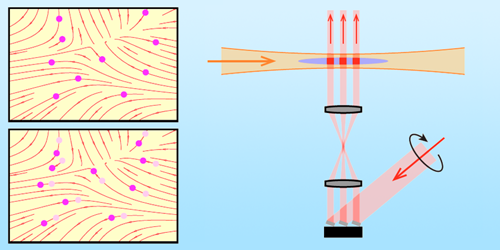Classical Turbulence Found in Quantum Fluid
An atomic Bose-Einstein condensate (BEC) is a cold gas inhabiting a collective quantum state. Mingshu Zhao of the University of Maryland, College Park, and his colleagues have now shown, using high-spatial-resolution imaging, that a BEC can display the hallmarks of classical fluid turbulence, suggesting that the energy flow within a BEC may also follow aspects of the classical model [1].
According to the classical Kolmogorov theory of turbulence, in many turbulent fluids, the energy of the largest eddies powers smaller eddies, which power even smaller eddies. This continues down to the smallest scales, where the energy is lost as heat. Associated with this energy “cascade” is a prediction for the way that the difference in velocity at two locations depends on their separation. Certain statistical measures of this difference are expected to depend on the separation distance according to a specific power law that indicates “Kolmogorov scaling.”
There have been hints of Kolmogorov scaling in BECs, but a direct test requires high-resolution imaging of the flow within a BEC, which was not possible previously. In their new experiments, Zhao and his colleagues first stirred up turbulence in their rubidium BEC. They then created the equivalent of tracer particles by splitting a laser beam and focusing the light into a few small regions within the BEC, where it altered the atomic spins. Next, they imaged these groups of atoms twice, 0.3 millisecond apart, to determine their velocities. After repeating this procedure many times, the team mapped out the flow velocities within the BEC with roughly 1-µm resolution. These results along with simulations showed that the BEC followed Kolmogorov scaling and likely exhibits an energy cascade.
–David Ehrenstein
David Ehrenstein is a Senior Editor for Physics Magazine.
References
- M. Zhao et al., “Kolmogorov scaling in turbulent 2D Bose-Einstein condensates,” Phys. Rev. Lett. 134, 083402 (2025).




